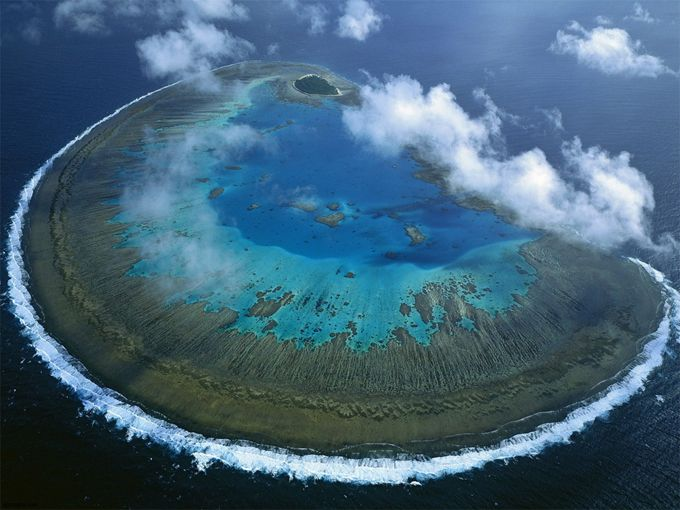The post The Great Barrier Reef’s Fight for Survival: Can Technological Advancements Help? appeared first on TheAussieway.
]]>While the situation is dire, emerging technologies offer hope for its survival. By understanding the reef’s challenges and leveraging innovative solutions, humanity can strive to protect this natural treasure.
What Are the Threats to the Great Barrier Reef?
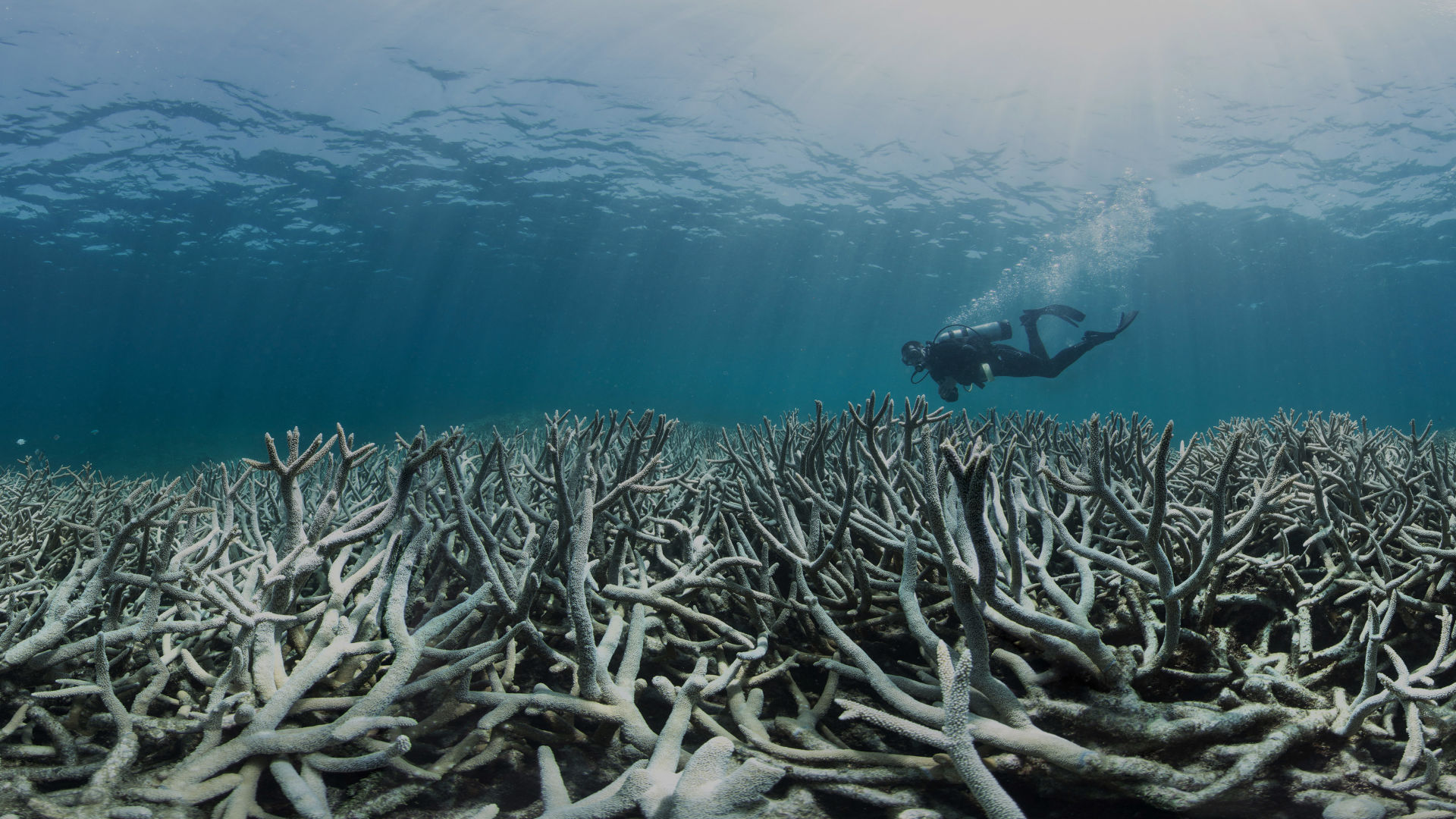
Image Credit: https://www.barrierreef.org/the-reef/threats/climate-change
The environmental threats to the Great Barrier Reef are multifaceted, with climate change at the forefront. One of the most alarming consequences is coral bleaching. This phenomenon occurs when corals, stressed by rising ocean temperatures, expel the symbiotic algae that provide them with energy and color. Without these algae, corals turn white and become vulnerable to disease and death.
Beyond bleaching, the reef faces a barrage of other challenges. Pollution, especially from agricultural runoff, introduces excessive nutrients into the water, fueling algae blooms that smother corals. Destructive fishing practices, including overfishing and the use of damaging nets, disrupt the ecological balance, further endangering the reef. The accumulation of marine debris, such as plastic, also harms marine life and coral structures. These combined factors exacerbate the already dire situation, making it clear that the great barrier reef threats require urgent attention.
Technological Interventions

Innovative technologies offer a beacon of hope for the Great Barrier Reef. Some key interventions include:
- Assisted Coral Breeding: Scientists are cultivating heat-resistant coral strains in controlled environments. These corals, bred for resilience to warming waters, can be introduced back into the reef to enhance its natural population.
- Coral Restoration: Healthy corals, grown in nurseries or collected from other areas, are transplanted onto degraded reef zones to stimulate recovery and provide a habitat for marine life.
- Advanced Monitoring Systems: Drones, satellite imaging, and underwater robots are employed to monitor reef health, detect bleaching events early, and assess the impact of restoration efforts.
These technologies are transforming the way conservationists approach reef preservation, enabling proactive and targeted interventions.
Innovation for Conservation
The fight to save the reef has spurred a wave of research and development aimed at creating new tools and techniques. Key innovations include:
- Microfragmentation: A technique where corals are broken into tiny fragments to accelerate their growth. This method allows for faster restoration of reef areas.
- Artificial Intelligence (AI): AI models analyze vast amounts of data to identify patterns and predict future risks. This enables proactive measures to mitigate potential threats.
- Underwater Robotics: Robots equipped with AI are deployed to plant corals, clean the seabed, and monitor marine life. These machines enhance the efficiency and precision of restoration efforts.
These cutting-edge technologies underscore the importance of collaboration between scientists, technologists, and conservationists to address the threats to the Great Barrier Reef effectively.
Balancing Technology and Nature
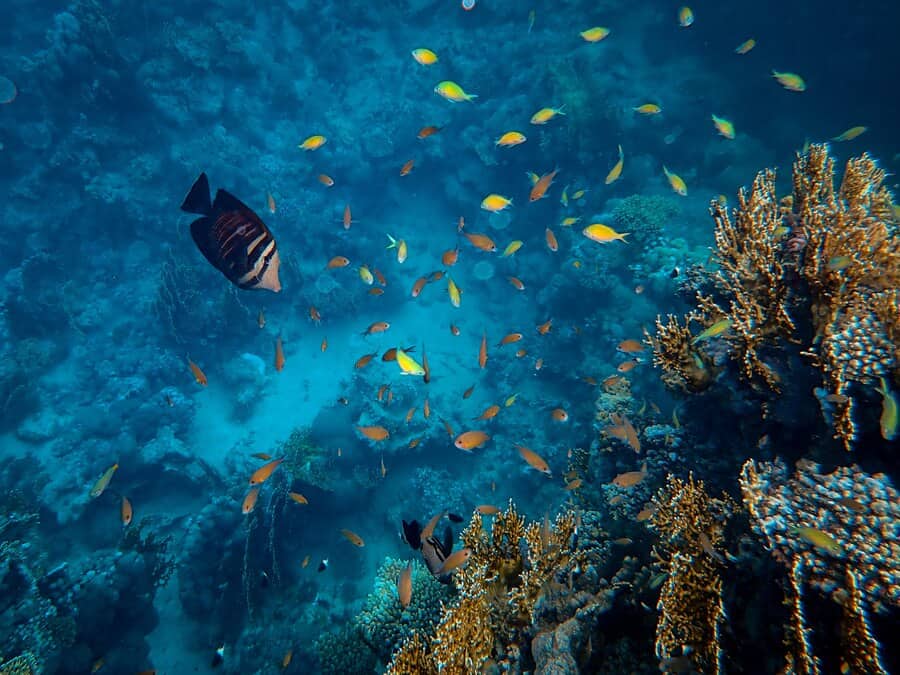
While technological advancements are promising, they are not without limitations. Some interventions, if not carefully managed, could have unintended consequences. For example, introducing genetically modified corals may impact the natural ecosystem in unforeseen ways. Overreliance on technology could also divert attention from addressing root causes, such as carbon emissions and unsustainable practices.
A holistic approach is essential. This involves integrating technological solutions with traditional conservation methods, such as establishing marine protected areas, regulating fishing activities, and reducing pollution. Local communities, Indigenous groups, and policymakers must also be actively involved in crafting and implementing strategies. Their knowledge and stewardship are invaluable in ensuring that efforts align with the reef’s natural dynamics.
Conclusion
The Great Barrier Reef stands at a crossroads. The environmental threats to the Great Barrier Reef are daunting, but technological innovations offer a path forward. Assisted coral breeding, restoration efforts, and AI-driven monitoring are reshaping the conservation landscape. However, true success requires a balanced approach that combines cutting-edge technology with sustainable practices and community engagement. By uniting science, innovation, and traditional wisdom, we can give the Great Barrier Reef a fighting chance to thrive for generations to come.
The post The Great Barrier Reef’s Fight for Survival: Can Technological Advancements Help? appeared first on TheAussieway.
]]>The post Top 5 Amazing Islands To Visit Great Barrier Reef appeared first on TheAussieway.
]]>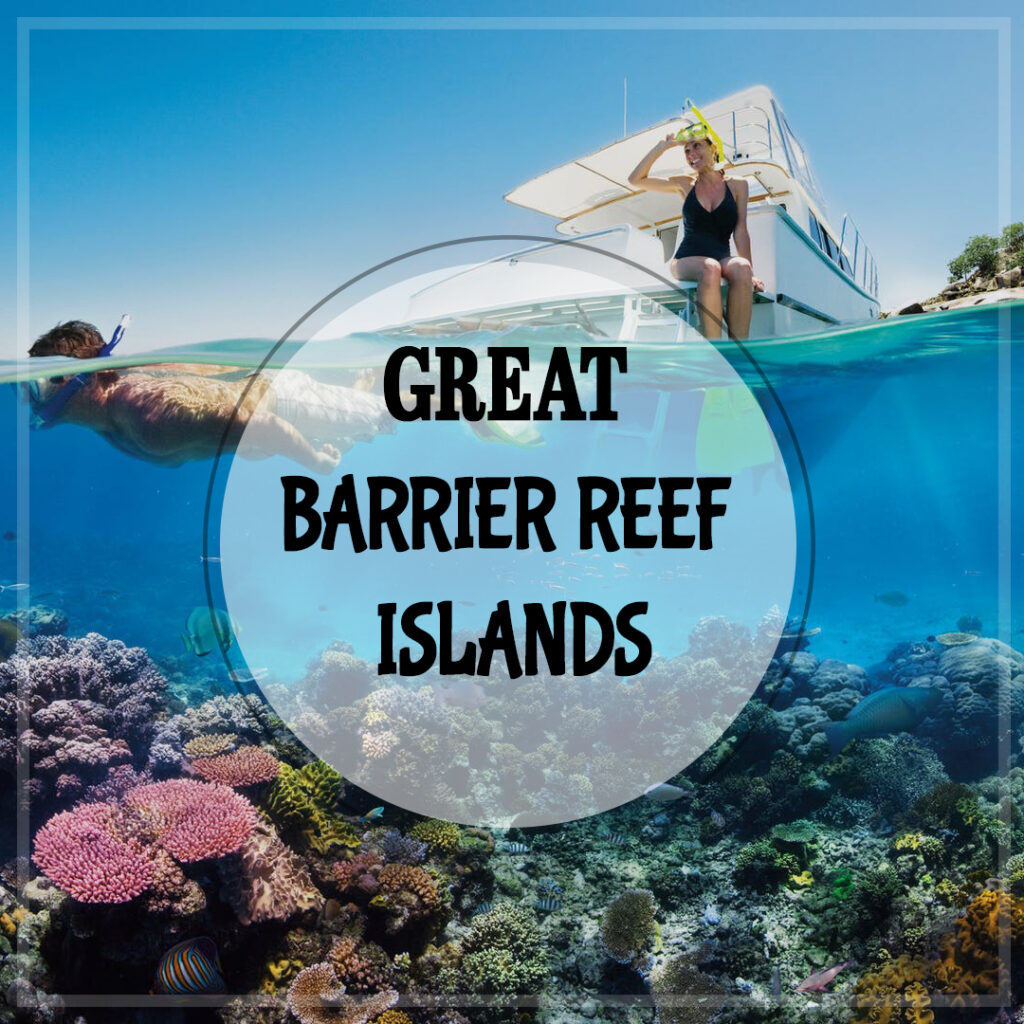
Dive deeper into this beautiful part of Australia and experience the stunning Great Barrier Reef for yourself.
The Great Barrier Reef in Queensland is undeniably one of the top tourist attractions in Australia. With a vast expanse stretching over 2,300 kilometres along the Queensland coast, this UNESCO-listed wonder is visible from space and draws millions of visitors annually.
Boasting more than 900 islands and coral cays, the reef is home to an astonishing variety of marine life. Whether you’re exploring vibrant coral gardens, spotting majestic sea turtles, or enjoying snorkeling in the Great Barrier Reef, there’s no shortage of unforgettable experiences.
If you’re planning a visit, here are the top five islands to explore, each offering unique experiences and breathtaking scenery.
Whitsunday Islands
The Whitsundays, often ranked among Queensland best beaches, is an archipelago of 74 tropical islands off the coast of central Queensland. With thousands of visitors and travellers coming from near and far every year, the Whitsundays hold an abundance of natural wonders and stunning holiday spots.
Lush island marine scapes, wondrous underwater ecosystems and perfect tropical temperatures are all found in this slice of paradise.
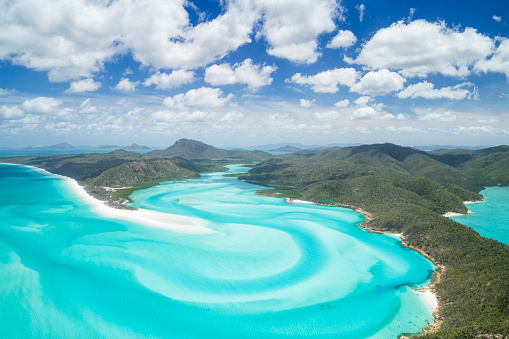
Why Visit?
- Whitehaven Beach – Consistently ranked among the world’s best beaches, Whitehaven’s 98% pure silica sand is powdery soft and remains cool underfoot.
- Hill Inlet – A spectacular viewpoint where the tides create a mesmerising swirl of white sand and turquoise water.
- Sailing Adventures – The Whitsundays is a premier sailing destination, offering overnight yacht charters and guided boat tours.
- Diverse Marine Life – Home to vibrant coral gardens, dolphins, sea turtles, and a variety of reef fish.
Best Activities
- Snorkeling and scuba diving at Hook Island or Hardy Reef
- Scenic flights over Heart Reef
- Overnight stays at luxury resorts like qualia on Hamilton Island
Lady Musgrave Island
One of the Great Barrier Reef’s biggest swimming pools, Lady Musgrave Island’s untouched beauty extends from land to sea. Located only 52km from Bundaberg, this tiny coral cay measures just 19.45 hectares in size and is one of the best places to visit in Queensland.
But what Lady Musgrave Island lacks in land size, she makes up for off-shore with a vast surrounding reef that’s brimming with marine life and colourful coral.
Why Visit?
- World-Class Snorkeling & Diving – One of the best spots for snorkeling in the Great Barrier Reef. Explore the turquoise lagoon, coral bommies, and diverse marine species.
- Turtle Nesting Grounds – Between November and March, Green and Loggerhead turtles come ashore to lay eggs.
- Unspoiled Camping Experience – As part of the Capricornia Cays National Park, visitors can camp under the stars with minimal human impact.
Best Activities
- Snorkeling and diving with manta rays, reef sharks, and vibrant coral fish
- Glass-bottom boat tours for a unique underwater perspective
- Kayaking and stand-up paddleboarding in the protected lagoon
Whitehaven Beach
One of Queensland’s best beaches and the dream-like paradise of Whitehaven beach is a spectacular 7km stretch of impossibly white sand located on Whitsunday Island.
The astonishingly white sand of Whitehaven Beach is the most extensive stretch of beach in the Whitsunday region. The sand is 98.9% pure silica, whereas typical beaches have sand with around 95% silica!
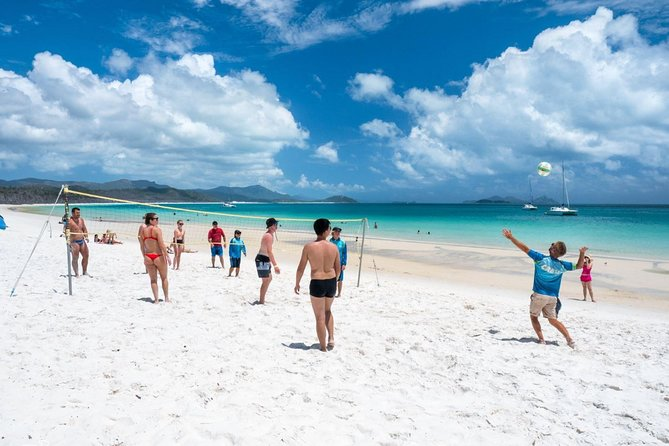
Whitehaven Beach should be on the bucket lists of travellers worldwide with thousands making the journey in 2022.
Why Visit?
- Incredible Sand & Water – The bright white silica sand contrasts stunningly with the crystal-clear turquoise waters.
- Hill Inlet Lookout – One of the most photographed locations in the Great Barrier Reef, offering panoramic views of swirling sands.
- Protected & Pristine – As part of Whitsunday Islands National Park, Whitehaven remains untouched by commercial development.
Best Activities
- Swimming and sunbathing on the soft silica sands
- Hiking to Hill Inlet Lookout for breathtaking views
- Taking a seaplane or helicopter tour for an aerial perspective
Fitzroy Island
Fitzroy Island is one of the best tropical islands in North Queensland. Located just a short ferry ride from Cairns, there’s no reason why anyone should miss this tropical gem when visiting Cairns and the Tropical North.
Whether you’re looking to spend an action-packed day trip from Cairns, or if you’d like to spend several days on Fitzroy Island exploring, you certainly won’t be disappointed.
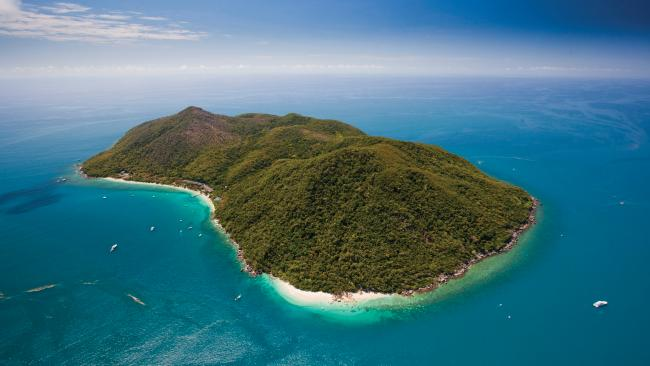
Why Visit?
- Accessible Yet Untouched – A quick trip from Cairns but still rich in natural beauty.
- Fitzroy Island National Park – Features hiking trails, dense rainforest, and stunning coastal views.
- Snorkeling Directly Off the Beach – Explore fringing reefs with clownfish, giant clams, and sea turtles.
Best Activities
- Hiking the Summit Track for panoramic views
- Visiting the Cairns Turtle Rehabilitation Centre
- Jumping on the Giant Ocean Trampoline for some fun in the sun
Lizard Island
Lizard Island is Australia’s northernmost island beach resort and the ultimate spot for luxurious seclusion, facilities and diving. Located 240km north of Cairns on The Great Barrier Reef.
The island is a protected National Park, with just one exclusive resort, 40 rooms and suites, and 24 pristine sandy beaches.
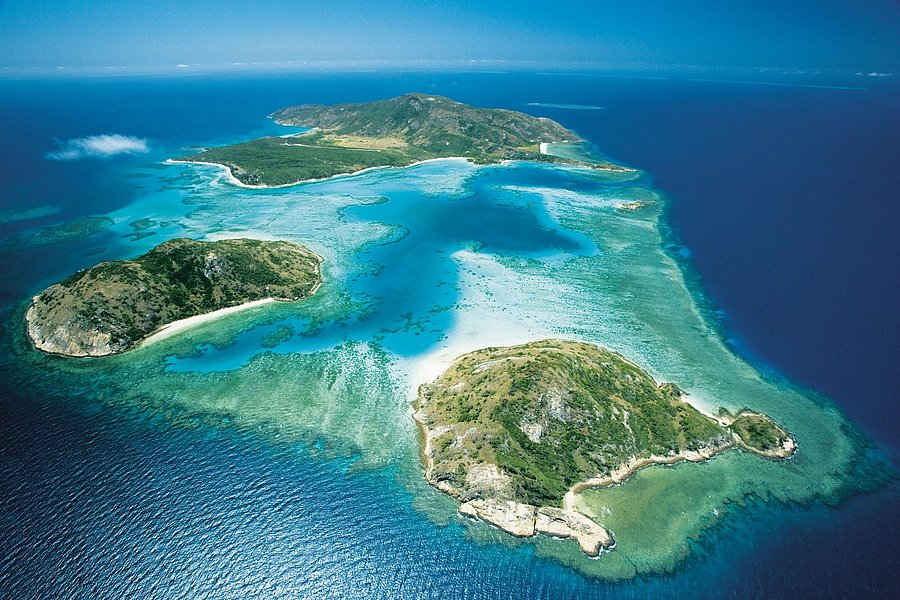
Why Visit?
- Unparalleled Seclusion – With only one luxury resort, the island is an intimate retreat for couples and honeymooners.
- Cod Hole Diving Site – One of the most famous dive sites in the world, where divers can encounter giant potato cod up close.
- Pristine Beaches & Turquoise Waters – The island has over 24 private beaches for ultimate relaxation.
Best Activities
- Luxury resort experiences at the Lizard Island Resort
- Diving and snorkeling at the world-renowned Ribbon Reefs
- Kayaking and paddleboarding in the serene waters
Whether you’re planning to sail, snorkel, dive, or relax on Queensland top attraction, the Great Barrier Reef island experience is unlike any other.
The Great Barrier Reef is home to countless marine life, in fact around 10% of the world’s fish population can be found along this coastline alone! Amongst the more than 1500 species of fish found here are many fan favourites, including the unmistakable clownfish and blue tang, also known as Nemo and Dory. So do not forget to jump right in!
For more inspiration on the best Great Barrier Reef tourism islands for you, check out this family-friendly island guide so you don’t forget to visit the best one next time!
The post Top 5 Amazing Islands To Visit Great Barrier Reef appeared first on TheAussieway.
]]>